
Review on 🧵 SINGER Professional 14T968DC Serger Overlock: 2-3-4-5 Stitch Capability, 1300 Stitches per Minute - Sewing Made Easy in White by Anastazja Steblianko ᠌

I really like the product, it fully meets my expectations.
1. There are not 10 lines as shown on the body, but 14 according to the instructions, sometimes one letter is set according to the mode and, depending on how many threads, different lines are threaded. 2. In my machine, the master said that the presser foot pressure is rather weak and the norm should be set not 3, but 4. For me, this is a plus, because basically if you go towards thick knitwear or tensile, the pressure should only be reduced, and an increase in pressure is very rarely necessary if only so that the thin slippery fabric does not move from under the overlock foot, but the maximum that is is more than enough. 3. From birth, my machine sewed very badly like a stitcher. The shoals were just everywhere. After the wizard, everything works perfectly. He corrected the lower looper and explained with the adjustment of the settings, which I did not pay attention to, but the stitchers are sensitive to this. The differential should be set as small as possible. Well, the overlock is generally not sensitive to any settings, as you like, it will sew everything without gaps. 4. Presser foot height. There is a moment that household overlocks / stitchers are not designed for thick fabrics. It is no coincidence that needles for them are sold no thicker than 90. Therefore, the height of the foot is adequate. Of course, for thick fabrics, it would be more convenient to have this height higher. Without gaps, the stitcher sews the maximum fabric with a total folded thickness of 3 mm (if measured without squeezing the fabric). All that is thicker, she makes gaps, about once every 10 cm. But in thick fabrics, the thread sinks and gaps are not visible. Overlock sews easily much thicker fabric, let's say 6 mm. And the thickening of the overlock goes well, you need to use all sorts of tricks with a stitcher. If you put 1 cm thick under the overlock, the knife can no longer grab it (therefore we sew without a knife) and you have to scroll it manually, since the needles bend under this thickness, fall not into the hole, but the plate and break. 5. The fabric of the stitcher does not chew. It’s just that if the needle hit the same place twice on the thickening, the fabric will not go further (the thread has wound around the looper), the fabric must be pulled out and sewn again.
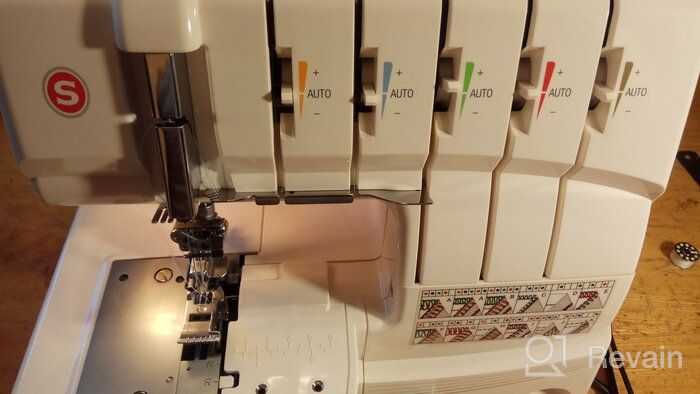
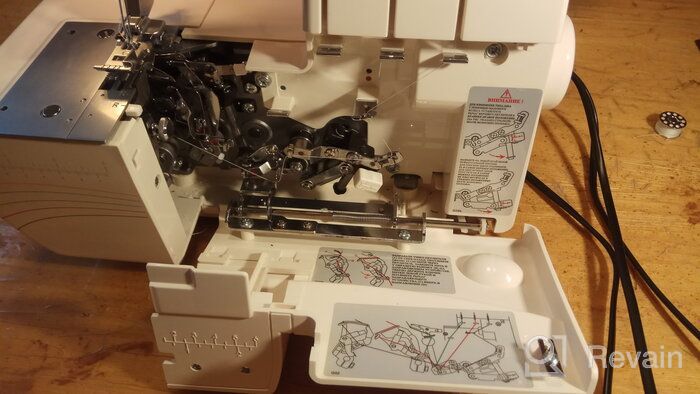

- 1. He sews everything perfectly. 2. Thread tension does not need to be adjusted, everything is always nice and even. For different fabrics on the overlocker, I only adjust the distance of the knife. Sometimes when the threads seem to be loose, I just set all the handles to the maximum tension and everything turns out beautifully. 3. Not capricious about threads. Especially the overlock. I even tried Soviet cotton 80, swept over, although there were gaps of 20 cm, and there was not much tension. With mersinized 2022 cotton 50, it sews perfectly both in undercoats and in overlock. 4. You can put threads on bobbins - it is not sensitive to this 5. The distance of the knife, in addition to the standard values of 5-7 mm, can also be adjusted up or down with a screw under the cover, if you suddenly have a non-standard task. 6. It is heavy and therefore stable, does not vibrate, about 8 kg, it can be lifted.
- 1. For stitching, the foot must be replaced with a transparent one in order to get into the markup. That native that is - completely blind. The foot costs from 1000, no matter how I searched for copies, I did not find fakes. Fits Merrylock feet. 2. Minor annoyances: the plate under the needles was screwed not quite in the center, I had to screw it over. The power cord socket dangled a lot from birth, I had to remove the entire sheath (which is not so easy, everything is tight there), it turned out that the screws were simply not screwed. Well, everything got better of course. 3. Threading requires good eyesight and is done with tweezers. In the light of the lamp, the metal parts gleam and the hooks are hard to see. 4. Switching from stitching to overlock and back from 5 minutes plus trial tests, if the test did not work, all over again, look at all the settings and try again. It's not fast, if you keep track of time. (Count: thread 4 threads through 5-6 knots each, raise the lower the knife, switch the overlock / stitcher lever, the mode knob, 3 settings knobs. Double-check everything so that the machine does not break, so the instructions say that a breakdown is possible if the lever do not lower / raise the mode (I did this, in this case the looper beats against the body . Nothing really broke. But probably forget it.))
New products
Comments (0)
Top products in 🧵 Sewing Machines
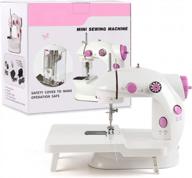
NEX Mini Sewing Machine For Beginners, Portable Dual Speed Sewing Machine With Extension Table, Needle Protector, Sewing Accessory Kit For Kids Women Household And Travel

11 Review
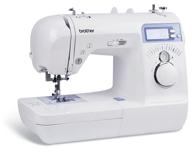
Sewing machine Brother INNOV-"IS 10

12 Review
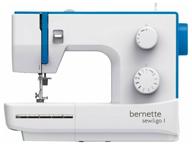
🧵 Bernina Bernette Sew&Go 1 Sewing Machine in White-Blue: Reliable and Efficient

7 Review

Portable NEX Sewing Machine With 12 Built-In Stitches Ideal For Crafting And Mending

10 Review
Another interesting products

Bling Rhinestone Sticker Bundle: 650 Self-Adhesive Clear Gems by eBoot

5 Review
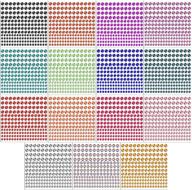
Housuner 2580 pcs Rhinestone Stickers: 15 Colors & 3 Sizes, DIY Self Adhesive Gem Embellishment Sheets - Crafts, Body, Nails, and More!

6 Review

🍬 FENGWANGLI Assorted Kawaii Candy Sweet Charms – Perfect for Crafts, Slime, DIY Resin & Candy Set Ornaments – 50-Piece Set

6 Review
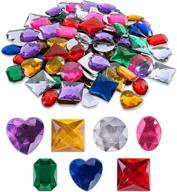
💎 100 Pack of Assorted Colorful Adhesive Stick-On Heart, Star, and Round Shaped Jewel Gems for Arts & Crafts, Themed Party Decorations, Children's Activities - Super Z Outlet

7 Review

